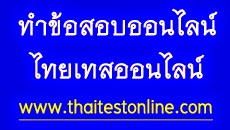| 1. 4.70 A deck level inspection is the most effective form of tank inspection. |
| 2. 4.84 It is acceptable for an inspector to sign Dry Certificates, Vessel Cleanliness certificates showing that cargo tanks are suitable for the intended cargo, ROB certificates with pumpability statements, and pumping logs. |
| 3. 4.88 When calculating a VEF which of the following data should be excluded? |
| 4. 4.77 Why should you never break blisters in a tank coating and never disturb piles of debris on a tank floor when performing a tank entry inspection? |
| 5. 4.55 What is the preferred method for preparing composite samples from vessel tanks? |
| 6. 4.20 Is it correct to apply a wedge calculation to an OBQ/ROB volume if the material is touching all four tank bulkheads ? |
| 7. 4.39 As a minimum, how many liquid level measurements must be taken in a vessel s tanks when the vessel is in motion (rolling)? |
| 8. 4.21 If you are only able to gauge the vessel s tanks from one location and the ROB is non-liquid, what should you use to obtain a volume? |
| 9. 4.46 What is the most accurate way of measuring a vessel s list? |
| 10. 4.44 What is the main reason for taking draft readings on fully-loaded vessels at the loading port? |
| 11. 4.72 When wall washing a tank, which of the following is correct? |
| 12. 4.56 What is freeboard on a vessel? |
| 13. 4.03 If a vessel is out of trim and product in a tank is touching all four bulkheads, should you use the wedge formula to calculate the volume? |
| 14. 4.19 If a series of innage measurements indicates that the ROB/OBQ lies evenly across the bottom, how should you determine the volume? |
| 15. 4.83 What should an inspector do if asked to sign a Dry Certificate: |
| 16. 4.13 What is the purpose of ballast? |
| 17. 4.82 Independent inspectors are not expected to correct barge tank gauges/dips for trim because most barges do not have trim tables. |
| 18. 4.02 If the vessel has independently certified wedge tables, they may be used instead of calculating the wedge volume yourself. |
| 19. 4.25 What is cargo that adheres to the bulkheads of a tank called? |
| 20. 4.48 The trim of a vessel will have no effect on the detection of free water. |
| 21. 4.16 When is an OBQ inspection performed? |
| 22. 4.85 The best way to prove the liquid/non liquid nature of ROB/OBQ is to have a sample |
| 23. 4.60 When the metric system is used; what size are draft numbers? |
| 24. 4.52 What is the definition of list? |
| 25. 4.01 If the vessel incurs an in transit loss of product and an in transit gain in water, what action should be taken? |
| 26. 4.68 Should a wall wash be performed on a wet tank surface? |
| 27. 4.22 The On Board Quantity (OBQ) measured at a loading port will usually be greater than the remaining on board (ROB) measured at the previous discharge port. |
| 28. 4.90 A valid VEF is one that results from at least five qualifying voyages: |
| 29. 4.08 When you are on board a marine vessel, the overall responsibility for the use of proper safety procedures, appropriate measurement equipment and the correct sampling equipment rests with? |
| 30. 4.24 What components may be included in OBQ? |
ให้ตรวจสอบชื่อนามสกุลว่ากรอกครบหรือไหม่
พร้อมกับตรวจข้อสอบว่าเลือกทำครบทุกข้อหรือไม่ ไม่ครบไม่ตรวจนะครับ
|
|
|
|
